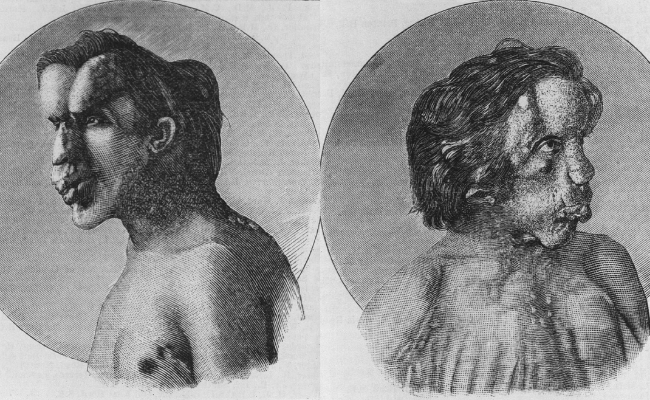How to Treat Clove Syndrome?
- December 04, 2023
- No Comments

What is Clove Syndrome?
Clove Syndrome, recognized by its clinical name Congenital Lipomatous Overgrowth, Vascular Malformations, and Epidermal Nevi, represents a rare and complex congenital disorder marked by aberrant tissue growth, including lipomatous overgrowth, vascular malformations, and epidermal nevi. Emerging at birth, this condition poses a spectrum of physical and medical challenges, necessitating a comprehensive and personalized approach to its treatment and management.
CLOVES syndrome, an exceptionally rare congenital disorder, denotes that individuals are born with this condition. It is characterized by the excessive growth of fatty tissue lumps beneath the skin and the formation of abnormally structured blood vessels throughout the entire body. Those dealing with CLOVES syndrome may also encounter complications related to the spine or skeletal system. With global reports officially documenting fewer than 200 cases to date, the scarcity and limited prevalence of this congenital condition are underscored.
Why does Clove Syndrome Occur?
The etiology of Clove Syndrome is rooted in somatic mutations that occur during early embryonic development. These mutations impact the genetic makeup of specific cells, leading to the anomalous growth and development of tissues, including overgrown fatty tissue, vascular malformations, and epidermal nevi. It's crucial to note that Clove Syndrome is not an inherited disorder; instead, it occurs sporadically due to these somatic mutations.
How is Clove Syndrome Diagnosed?
The diagnosis of Clove Syndrome involves a multidimensional approach, combining clinical assessments, advanced imaging studies, and genetic testing. Physical examinations play a pivotal role in identifying characteristic features such as overgrown fatty tissue, vascular malformations, and skin abnormalities. Imaging techniques like Magnetic Resonance Imaging (MRI) and Computed Tomography (CT) scans contribute to visualizing the extent of tissue involvement. Genetic testing is often employed to identify specific somatic mutations associated with Clove Syndrome, aiding in the confirmation of diagnosis.
Treatment Solutions for Clove Syndrome
- Multidisciplinary Approach: The management of Clove Syndrome necessitates a multidisciplinary approach, bringing together specialists from various medical fields. Dermatologists, orthopedic surgeons, vascular specialists, geneticists, and other experts collaborate to ensure comprehensive care. This coordinated effort addresses the diverse and complex symptoms associated with the condition.
- Surgical Interventions: Surgical procedures play a crucial role in managing specific aspects of Clove Syndrome. For instance, liposuction or surgical debulking may be employed to reduce overgrown fatty tissue, contributing to improved mobility and functionality. Surgical interventions can also target vascular malformations, aiming to alleviate associated complications.
- Medical Management: Medical interventions are integral to the overall management of Clove Syndrome, focusing on symptom control and complication prevention. Pain management strategies, treatment for skin abnormalities, and measures to address vascular issues may be implemented. The choice of medications or therapeutic approaches is tailored to individual needs.
- Orthopedic Interventions: Musculoskeletal issues often arise in individuals with Clove Syndrome due to abnormal tissue growth. Orthopedic interventions, such as physical therapy, orthopedic devices like braces, or surgical procedures, may be recommended. These interventions aim to enhance mobility, correct skeletal abnormalities, and improve overall functionality.
- Genetic Counseling: Considering the somatic nature of the mutations causing Clove Syndrome, genetic counseling is a valuable component of the overall treatment plan. It provides affected individuals and their families with insights into the origin of the condition and guidance on potential risks in future pregnancies.
Benefits of Treatment and Management
- Improved Quality of Life: Effective treatment and management of Clove Syndrome significantly contribute to an improved quality of life for affected individuals. Addressing physical challenges, managing pain, and mitigating associated symptoms enhance overall well-being.
- Enhanced Functionality: Surgical and orthopedic interventions aim to enhance functionality, particularly in cases where abnormal tissue growth impacts mobility. By improving physical capabilities, these interventions support independence and facilitate daily activities.
- Pain Relief: Pain management strategies play a crucial role in alleviating discomfort associated with Clove Syndrome. Tailored approaches ensure that individuals experience relief, promoting a better overall sense of comfort and well-being.
- Prevention of Complications: Timely interventions play a crucial role in preventing or minimizing complications associated with Clove Syndrome. Surgical procedures, medical management, and genetic counseling collectively contribute to mitigating risks and ensuring better outcomes for affected individuals.
- Psychosocial Support: Living with a rare congenital disorder like Clove Syndrome can pose psychosocial challenges. Comprehensive care extends beyond the physical aspects, encompassing psychological support, counseling, and resources to help individuals and their families navigate the emotional dimensions of the condition.
Comments (0)